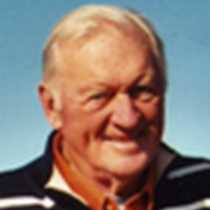Columbia River Gorge, Washington & Oregon
Guests had a surprise this morning (besides clear blue skies and a bright sunrise) – locking through Bonneville Dam. Virtually everyone was on deck as naturalists and the historian described the surrounding Cascade Mountains, brooding Beacon Rock (named by Lewis & Clark), bird life, Indian fishing platforms, the dam’s spillway, lock and power house.
After tying up at the town of Cascade Locks, another surprise occurred – an early visit to Multnomah Falls. The falls are Oregon’s major outdoor tourist attraction, named for the aboriginal people who once dominated the mid-Columbia River. Noted by Lewis & Clark in 1805 as they moved downriver, this dramatic 620-foot cascade is one of 77 waterfalls in the Columbia Gorge, all of them remnants of the Bretz Floods 16,000 to 500,000 years ago as they washed downriver leaving these creeks and runs high and dry. Guests then boarded a motor coach for an eastward journey to Hood River and the walking and biking portion of Sam Hill’s scenic and exquisitely designed 1917 Columbia Gorge highway.
The trailhead, near the town of Mosier, Oregon, famous for its cherry crop, saw the departure of three groups: bicycle riders; fast walkers (4.5 miles) and slow walkers (2 miles.) Besides big leaf maple, Gary oak and a profusion of changing colors, views of the river and basalt walls and towers dominated the scene. At the Mosier Tunnel walkers photographed and gaped at stunning east and west vistas and boat traffic. Everyone returned to the National Geographic Sea Bird for lunch and then departed for more adventures upriver. The Columbia Gorge Discovery Center in The Dalles, Oregon and Maryhill Museum on the Washington side were next on the schedule.
It’s difficult not to become absorbed at the Columbia Gorge Discovery Center. That institution, overlooking the Columbia River, consists of two parts: 1) An interactive history of Wasco County and the Oregon Trail; and 2) a sister building which describes and defines the river itself. Another attraction is an outdoor museum with a pond surrounded by regional botanical specimens.
Next stop: Sam Hill’s unique and eccentric Maryhill Museum. This building, which overlooks the river and about 20 miles of northern Oregon wheat country, has one of the Pacific Northwest’s best collections of Indian artifacts, chess and checkerboard sets, Rodin sculpture, and the story of Sam Hill and his museum co-founders Alma Spreckels, Loie Fuller and Queen Marie of Romania. In the shade of the sculpture garden amongst wandering peacocks, our hotel staff provided an outdoor wine tasting featuring local vintages, cheeses and other treats. The drive home through this brown, stony country was narrated by the historian. And so to the end of a fulsome, delightful day.
Guests had a surprise this morning (besides clear blue skies and a bright sunrise) – locking through Bonneville Dam. Virtually everyone was on deck as naturalists and the historian described the surrounding Cascade Mountains, brooding Beacon Rock (named by Lewis & Clark), bird life, Indian fishing platforms, the dam’s spillway, lock and power house.
After tying up at the town of Cascade Locks, another surprise occurred – an early visit to Multnomah Falls. The falls are Oregon’s major outdoor tourist attraction, named for the aboriginal people who once dominated the mid-Columbia River. Noted by Lewis & Clark in 1805 as they moved downriver, this dramatic 620-foot cascade is one of 77 waterfalls in the Columbia Gorge, all of them remnants of the Bretz Floods 16,000 to 500,000 years ago as they washed downriver leaving these creeks and runs high and dry. Guests then boarded a motor coach for an eastward journey to Hood River and the walking and biking portion of Sam Hill’s scenic and exquisitely designed 1917 Columbia Gorge highway.
The trailhead, near the town of Mosier, Oregon, famous for its cherry crop, saw the departure of three groups: bicycle riders; fast walkers (4.5 miles) and slow walkers (2 miles.) Besides big leaf maple, Gary oak and a profusion of changing colors, views of the river and basalt walls and towers dominated the scene. At the Mosier Tunnel walkers photographed and gaped at stunning east and west vistas and boat traffic. Everyone returned to the National Geographic Sea Bird for lunch and then departed for more adventures upriver. The Columbia Gorge Discovery Center in The Dalles, Oregon and Maryhill Museum on the Washington side were next on the schedule.
It’s difficult not to become absorbed at the Columbia Gorge Discovery Center. That institution, overlooking the Columbia River, consists of two parts: 1) An interactive history of Wasco County and the Oregon Trail; and 2) a sister building which describes and defines the river itself. Another attraction is an outdoor museum with a pond surrounded by regional botanical specimens.
Next stop: Sam Hill’s unique and eccentric Maryhill Museum. This building, which overlooks the river and about 20 miles of northern Oregon wheat country, has one of the Pacific Northwest’s best collections of Indian artifacts, chess and checkerboard sets, Rodin sculpture, and the story of Sam Hill and his museum co-founders Alma Spreckels, Loie Fuller and Queen Marie of Romania. In the shade of the sculpture garden amongst wandering peacocks, our hotel staff provided an outdoor wine tasting featuring local vintages, cheeses and other treats. The drive home through this brown, stony country was narrated by the historian. And so to the end of a fulsome, delightful day.




